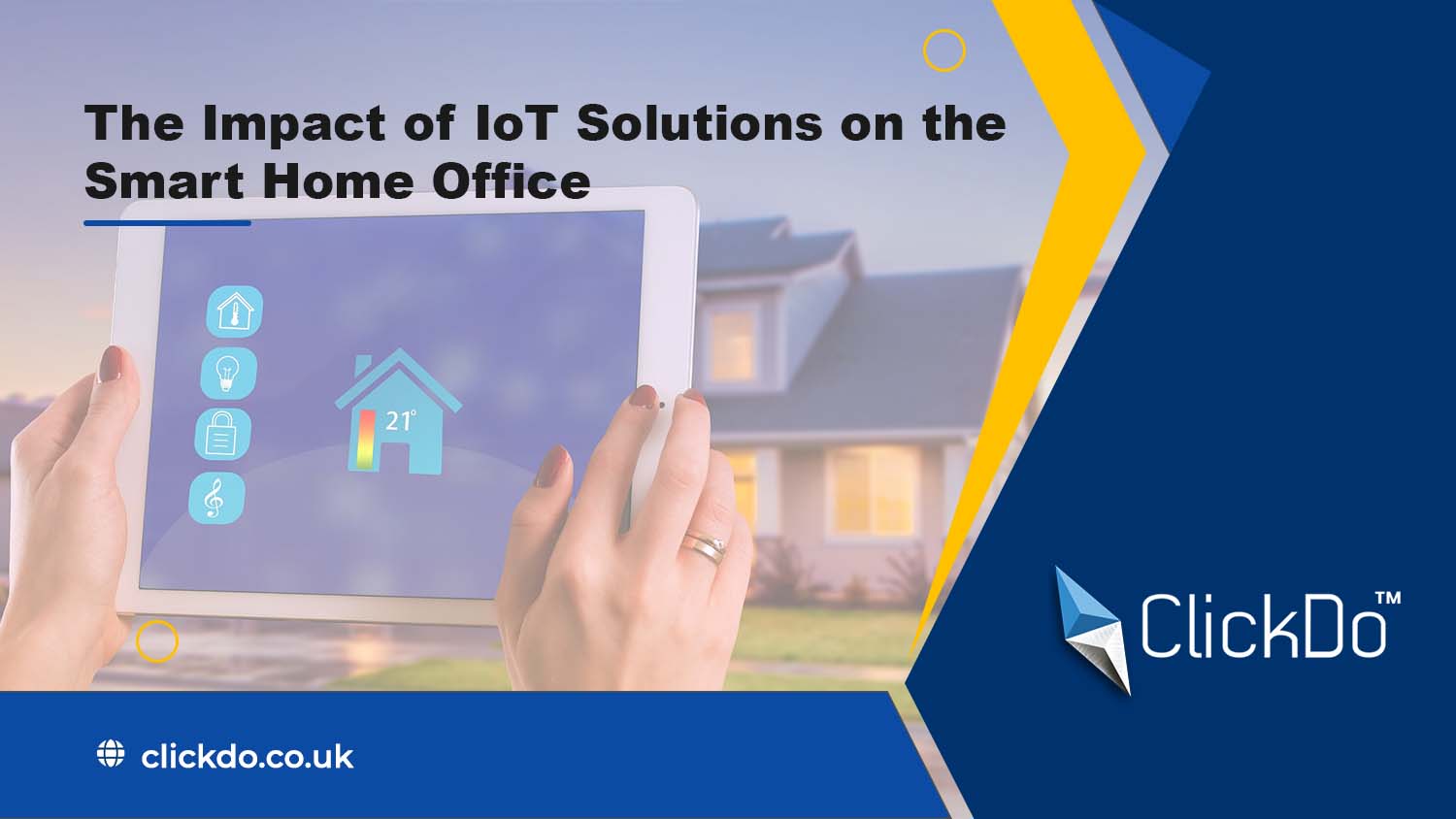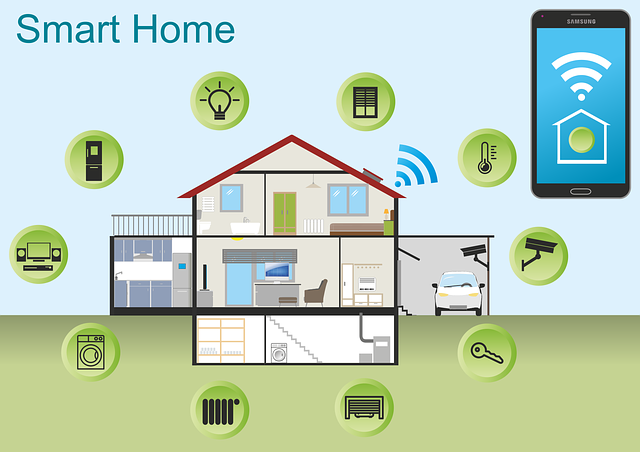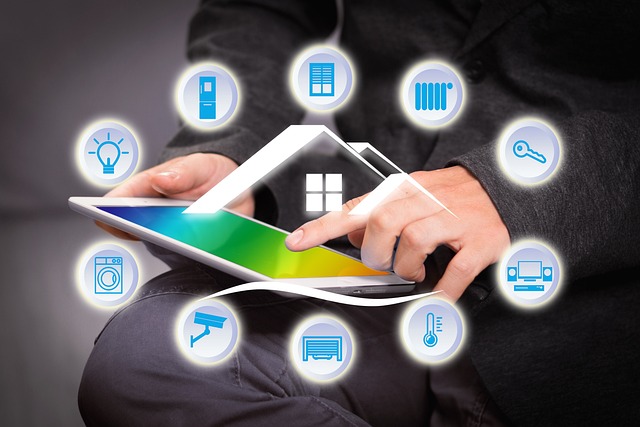
The Impact of IoT Solutions on the Smart Home Office
Nowadays, the Internet of Things (IoT) has become one of the most essential innovative technologies, along with AI and machine learning.
Smart cutting-edge solutions make our lives easier in different cases: you can connect every object to the internet with the help of embedded devices.
IoT encompasses a wide range of applications, from consumer devices such as smart home solutions or pet trackers to industrial assets – vehicles, robots, oil and gas rigs, etc.
According to Policy Advice, the global IoT market will reach $520 billion by 2027. Technology has finally reached a point where people are ready to accept this lifestyle.
In this article, we will delve deeper into the IoT world, explaining IoT benefits and drawbacks, and exploring smart home Internet of Things solutions and their impact on modern living and working from home.
Table of Contents
What is a Smart Home IoT Solution?
IoT is a rapidly growing technology in various industries where something can be automated. Lately, IoT is developing especially actively in the agricultural sector, logistics, and smart homes. In any scenario requiring remote monitoring of an object’s status or the extensive collection of data for subsequent analysis. Sensors collect information about the equipment’s condition, so maintenance and repairs are handled exactly when you need them thanks to IoT.
The possibilities are endless with smart homes or home offices and the Internet of Things. Your smart home can welcome you by turning on the lights, playing your favourite music, and unlocking the front door for you. It can even detect your arrival and adjust the temperature to your preferred setting.
And when it’s time for bed, your smart home can ensure a peaceful night’s sleep by dimming the lights, closing the curtains, and playing soothing sounds.
It’s a revolution that is transforming the way we live and work from home, making our homes more efficient, comfortable, and personalised. So, if you’re ready to embrace the future, it’s time to turn your home into a smart home and experience the wonders of the IoT.

Impact of IoT Solutions on the Smart Home and Modern Living and Working
Increasing convenience in smart homes is one of the biggest impacts of IoT. For example, control of smart household appliances such as a coffee maker that brews coffee at exactly 8 a.m. or a fridge that signals the absence of essential products. Also, it’s nice to work from home while the temperature is perfectly controlled with the help of a smart thermostat.
Public safety can also be improved by IoT devices in smart cities with smart buildings especially. For a smart home to reach the mass market, it must solve problems that create discomfort in everyday life. The average person is not concerned about how much electricity we save using a smart light bulb. But show me a machine for automatically folding laundry or something that will collect cups left throughout the apartment – I will be first in line to buy it. This, by the way, is the secret of robotic vacuum cleaners’ popularity – they really help solve the problem of routine dust collection.
In a smart home, the counters themselves record how much energy was spent each month – there is no need to record the indicators. Some technologies for such a house will even be able to show how much a particular light bulb or household device connected to the network consumes.
In essence, the smart house is an intermediary between the user and the smart IoT devices – it combines all their data and displays them to the user in a form convenient for them. If you’re working from home or run a home business, such convenience can make claiming expenses far easier.
Benefits of IoT for a Smart Home Office
IoT brings many benefits to smart homes beyond convenience.
- IoT enhances human interactions with the environment by fostering deeper relationships between individuals and their surroundings: Using sensors and data analytics, smart homes are able to understand the rhythms of daily life, offering insights into energy use, health patterns, and even emotional health. This intimate understanding allows homeowners to make informed decisions that optimize resource usage and also promote sustainable living practices.
- Smart homes benefit from IoT by reducing energy consumption. For full-fledged IoT operation, it is necessary to achieve network autonomy and receive energy from the environment. According to the American Energy Conservation Council, smart home automation systems can reduce the cost of building infrastructure maintenance by 30-50%.
- IoT transforms the concept of security, turning homes into havens of safety and peace of mind: Smart surveillance cameras, motion sensors, and door locks provide robust layers of protection, but it’s the intelligent integration of these devices that truly sets IoT-enabled security systems apart. Picture receiving instant notifications on your smartphone the moment a package is delivered or being able to remotely monitor your home while on vacation, all with the swipe of a finger. In an increasingly interconnected world, IoT empowers individuals to take control of their security without sacrificing convenience or accessibility.
- IoT can foster a sense of interconnectedness and community: Through connected devices and shared data, homeowners can collaborate with neighbours, local authorities, and even city planners to create safer, more sustainable neighborhoods. Whether it’s coordinating community-wide energy-saving initiatives or sharing real-time updates on local events, IoT acts as a catalyst for social engagement and collective action, transforming residential areas into vibrant, interconnected ecosystems.
Analyzing the technological progress of the last decades, it is possible to confidently say that humanity is moving towards the IoT lifestyle concept implementation. But when we will be able to live in a “smart” city and use all the smart gadgets benefits – it’s a matter of time.

Drawbacks of IoT for a Smart Home Office
Let’s talk about the drawbacks:
- Security and privacy issues: The main risk is in the open database. Security risks are a severe serious drawback of IoT solutions for smart homes. The number of interconnected devices transmitting sensitive data increases cyber security vulnerabilities. Personal privacy can be violated through unauthorized access or data breaches caused by weak security measures. A smart home device usually gathers and transmits data about users’ habits, preferences, and activities of its users. Fraudsters will have the opportunity to hack not only accounts, computers, and even refrigerators. There may be concerns about privacy as users may be uncomfortable with sharing or possibly misusing their personal information. Developing and implementing smart home solutions remains a challenge because of the need to balance the convenience of IoT with protecting user privacy.
- The system is not unified: The problem of IoT integration is the absence of common rules and standards. The lack of understanding of the overall picture complicates the, it is difficult to implement a universal solution.
- Price: Equipment is expensive, although its use will pay off in the future: the smart home system will help save on electricity and water supply, production equipment will warn in advance of the breakdown risk in advance, and kitchen equipment will prevent food spoilage. But if we calculate the cost of money and time to install such an automation system as a smart thermostat, we will be convinced that the game is not worth the candle.
- Interoperability Issues: Various IoT smart devices do not have standardized communication protocols, which can lead to interoperability issues. It may be difficult to communicate between devices made by different manufacturers, as they may use proprietary systems. Smart home systems can be limited in their effectiveness and integration as a result.
- Stability: A stable internet connection is an essential part of IoT devices. In cases of power outages or network issues, smart home functionalities may be compromised.
According to its concept, the modern smart home has become part of the Internet of Things. But before implementing IoT solutions into your everyday life, you should compare the benefits to the risks and issues it can bring to you.
Conclusion
The Internet of Things has transformed traditional homes into automated interconnected spaces. Smart home technologies have many advantages: energy savings, enhanced security systems, and an additional level of comfort and coziness in your home. Towards a future where everyone lives and works in a smart home, hardware manufacturers must unify the concept of what a smart home is. We need to work on safety. To maximize efficiency, building automation, equipment installation, and operation need to be made easier so that the cost of time and money is justified.
Author Profile
- Online Media & PR Strategist
- Blogger and Educator by Passion | Contributor to many Business Blogs in the United Kingdom | Fascinated to Write Blogs in News & Education I have completed a journalism summer course at the London School of Journalism and am an eBook author.
Latest entries
 EmploymentFebruary 6, 2025How Do Accurate Testing Solutions Help Create Safer Work Environments in the UK: An Expert Analysis
EmploymentFebruary 6, 2025How Do Accurate Testing Solutions Help Create Safer Work Environments in the UK: An Expert Analysis Online BrandingNovember 27, 2024Global vs. Local Websites: Which is Best for Business?
Online BrandingNovember 27, 2024Global vs. Local Websites: Which is Best for Business? TechnologyNovember 6, 20247 Mobile Usability Tips for Online Platforms to Boost Brand Trust
TechnologyNovember 6, 20247 Mobile Usability Tips for Online Platforms to Boost Brand Trust Home BusinessSeptember 25, 2024Top 8 Home Office Essentials for a Seamless Work from Home Experience
Home BusinessSeptember 25, 2024Top 8 Home Office Essentials for a Seamless Work from Home Experience

